By Christopher Miskimon
It was nearly dawn on the morning of March 23, 1943, when a motorcycle and sidecar bearing two soldiers of the 10th Panzer Division blundered into the American lines in front of the town of El Guettar in Tunisia. One soldier was immediately captured and the other wounded. The prisoner quickly revealed a German attack was coming at 0500, just a few minutes away. The American scouts soon spied a square formation of Nazi tanks and self-propelled guns advancing toward them in the dim light of early morning. The Yank scouts quickly fell back toward their parent unit, the 601st Tank Destroyer Battalion.
More than a hundred German armored vehicles with infantry in support approached the battalion. The Americans’ main weapons of defense that morning were 31 M3 tank destroyers, half-tracks toting 75mm antitank guns. A half-dozen M6s, trucks mounting tiny 37mm guns, supported them in a battle line some two miles long. They were dug in along a ridge and ready, positioned directly in front of the 1st Infantry Division’s artillery. Infantry units occupied hills on both flanks. The artillery opened fire on the approaching German tanks, but their crews only opened their formation.
Just outside the tank destroyers’ range, the panzers split into two groups. The first, with 30 tanks, went left and started up the highway toward El Guettar. This group soon ran into A Company, 601st, who poured fire into the German flank. Within minutes eight tanks were knocked out and the Germans fell back, towing four of their disabled tanks with them. The rest of the panzers moved toward B and C Companies dug in along the ridge. Lines of tanks with infantry advanced as if they were on parade. The Americans opened fire with armor-piercing rounds, pelting the Germans in a deadly hail. Forward observers soon took over, calling out distances and directions to the enemy. With an idea of where to aim, a half-track would pop up to the ridgeline, fire, and then back down the ridge before the enemy could return fire.
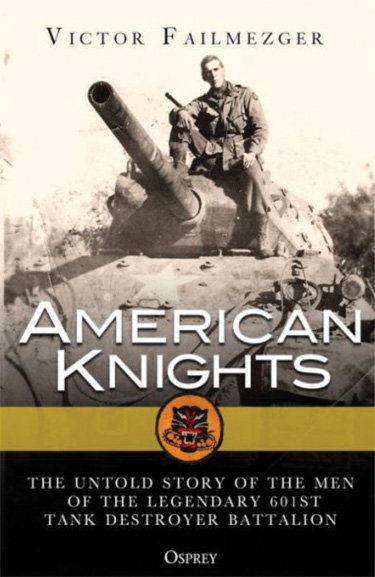 The Germans kept up the attack, and soon the Americans were so busy they could not back down the ridge or risk being overrun. They stayed visible and covered each other as best they could. The fighting went on until noon with several tank destroyers lost. More attacks would come later in the day, including a ruse using Germans in American uniforms and driving a captured half-track. By the time the fighting was over, the 601st would lose 27 of its tank destroyers but was credited with knocking out 37 enemy tanks and helping turn the tide of the attack. The novice U.S. Army held its own at El Guettar.
The Germans kept up the attack, and soon the Americans were so busy they could not back down the ridge or risk being overrun. They stayed visible and covered each other as best they could. The fighting went on until noon with several tank destroyers lost. More attacks would come later in the day, including a ruse using Germans in American uniforms and driving a captured half-track. By the time the fighting was over, the 601st would lose 27 of its tank destroyers but was credited with knocking out 37 enemy tanks and helping turn the tide of the attack. The novice U.S. Army held its own at El Guettar.
The concept of the tank destroyer was still new and relatively untested in 1943. The doctrine worked well at El Guettar but soon showed its flaws elsewhere. Nevertheless, large numbers of tank destroyer battalions were already in service and so they were kept in the fight, seeing use not only in their assigned role but also as hasty artillery, assault guns to support the infantry, and sometimes as improvised transport with gangs of men loaded atop their engine decks for quick advances. The story of one of these battalions, the 601st, is fully revealed in American Knights: The Untold Story of the Men of the Legendary 601st Tank Destroyer Battalion (Victor Failmezger, Osprey Publishing, Oxford, UK, 2018, 448 pp., maps, photographs, appendices, notes, bibliography, index, $16.00, softcover).
Numerous diaries, letters and interviews were used to make this account, but the author primarily focuses on nine men who served in the unit to tell its story. The book begins with the 601st’s formation, training, and equipment before launching into its time in combat, which ranged from North Africa to Italy, France, and then Germany, where it was present for the final battle of the European War. It is an effective, time-honored format for such a book, and it works well here. The reader is treated to an effective blend of the author’s prose and the words of the participants, making the work a pleasure to read and easy to follow. While the tank destroyer concept was ultimately proven flawed, the bravery and dedication of the tank destroyer men was validated over and over throughout the war.
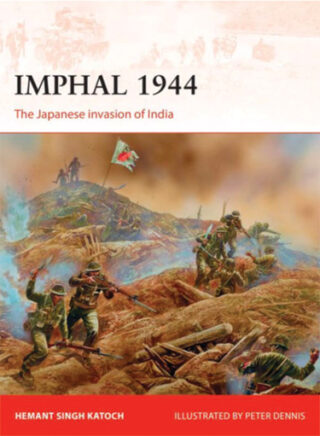 Imphal 1944: The Japanese Invasion of India (Hemant Singh Katoch, Osprey Publishing, Oxford, UK, 2018, 96 pp., maps, photographs, bibliography, index, $24.00, softcover)
Imphal 1944: The Japanese Invasion of India (Hemant Singh Katoch, Osprey Publishing, Oxford, UK, 2018, 96 pp., maps, photographs, bibliography, index, $24.00, softcover)
The U-Go offensive was Japan’s attempt to capture the Indian town of Imphal, a key piece of terrain for further Japanese attacks into India itself. Whoever held Imphal and the surrounding state of Manipur controlled the easiest point of access between India and Burma to the immediate east. The Japanese 15th Army attacked the area in March 1944, clashing with the IV Corps of the British 14th Army. The fighting went on for the next four months with more than 200,000 troops involved on both sides. It was often desperate and brutal fighting in difficult conditions, as the ground was hilly and heavily forested. When it was over, an estimated 30,000 Japanese soldiers were dead and More than 20,000 wounded, injured, or sick. Their retreat back into Burma was a terrible, grueling ordeal. This was the largest defeat the Japanese Army ever suffered on land, and afterward they could never again assume the offensive in Burma.
This is the 319th volume in Osprey’s Campaign series, covering the great battles and operations of military history. The book provides an excellent overall view of the Imphal fighting through the comprehensive text, lavish photographs, and original artwork. Detailed maps keep the reader centered on the events. The author, an expert on the engagement, has pioneered battlefield tours of Imphal, and his expertise shows through in this work.
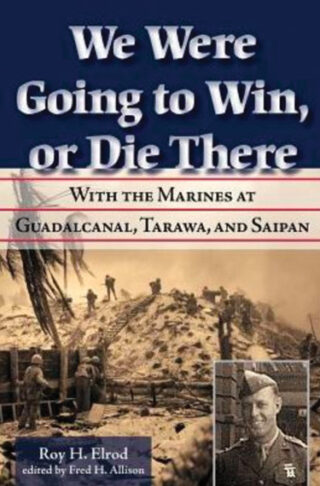 We Were Going to Win, or Die There: With the Marines at Guadalcanal, Tarawa and Saipan (Roy H. Elrod edited by Fred H. Allison, University of North Texas Press, Denton, 2017, 289 pp., maps, photographs, bibliography, index, $29.95, hardcover)
We Were Going to Win, or Die There: With the Marines at Guadalcanal, Tarawa and Saipan (Roy H. Elrod edited by Fred H. Allison, University of North Texas Press, Denton, 2017, 289 pp., maps, photographs, bibliography, index, $29.95, hardcover)
Roy Elrod, a native West Texan, enlisted in the United States Marine Corps in the summer of 1940 as war clouds thundered over Europe and began looming in the Pacific. Assigned to the 8th Marine Regiment, he rose rapidly, leading a platoon of 37mm antitank guns on Guadalcanal. With his fellow Marines Roy endured starvation, disease, and everything the enemy could throw at them, earning a Silver Star for his actions. His next fight came at Tarawa, where he and his men waded ashore with their 37mm guns. They were the only such platoon to get their guns ashore and into action that day. The battle lasted four days, among the longest of the young man’s life. Roy’s final World War II battle was on Saipan, where he led a platoon of half-tracks carrying 75mm cannons. They were right up front with the infantry, blasting caves and pillboxes often at pointblank range. During the fighting he was wounded by enemy artillery, ending the war for him.
This is Roy Elrod’s biography, painstakingly researched and written by his editor, who used hours of interviews with Roy along with his wartime letters and official sources to supplement the history. Most of the prose is Elrod’s own words, which are clear and authentic, with many humorous insights of the sort any veteran will recognize. This work is engaging and readable, keeping the reader’s interest page after page.
 The Third Reich in 100 Objects: A Material History of Nazi Germany (Roger Moorhouse, Greenhill Books, South Yorkshire, UK, 2017, 272 pp., photographs, bibliography, $39.95, hardcover)
The Third Reich in 100 Objects: A Material History of Nazi Germany (Roger Moorhouse, Greenhill Books, South Yorkshire, UK, 2017, 272 pp., photographs, bibliography, $39.95, hardcover)
Nazi Germany was more than a war machine, even more, tragically, than an evil force in the world. It was the transformation of a society and the movement of that society down a path that in the end led to absolute ruin, not just for the German nation but all those destroyed and ruined through the Third Reich’s efforts at world domination. It took a nation organized for destruction to do what Hitler’s rule did, and such a culture produces myriad things, both outrageous and mundane. Zyklon-B gas canisters sit alongside Volkswagen Beetles. Swastikas and runic symbols adorn postcards and postage stamps. Tiger tanks rolled down the autobahn, the world’s first superhighway and a civil engineering marvel.
Books of “history in 100 objects” are a relatively new phenomenon, but they have quickly captured readers’ attention through their fresh views of the things people used and built at the time. This work successfully delves into the psyche and outlook of one of history’s most horrible regimes through what it made, both at war and during peace. The Nazis made great efforts to push the entire nation in a single direction and to that end insinuated Nazi ideology and symbolism into all facets of society. This is evident in the objects depicted in this book, all of them well chosen for their significance. Also included are items such as Hitler’s paint box and his mustache brush. This work effectively demonstrates that evil is not just parades and weapons; it can actually be quite banal.
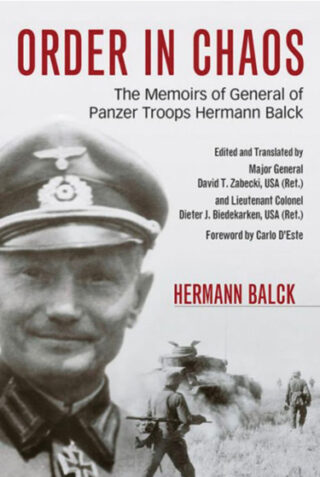 Order in Chaos: The Memoirs of General of Panzer Troops Hermann Balck (Edited by David T. Zabecki and Dieter J. Biedekarken, University Press of Kentucky, Lexington, 2015, 541 pp., maps, photographs, appendices, notes, index, $34.95, softcover)
Order in Chaos: The Memoirs of General of Panzer Troops Hermann Balck (Edited by David T. Zabecki and Dieter J. Biedekarken, University Press of Kentucky, Lexington, 2015, 541 pp., maps, photographs, appendices, notes, index, $34.95, softcover)
In late November 1942, howling storms began to blow across the vast steppes of the Soviet Union. Winter had arrived. One day Hermann Balck sat comfortably in a railroad car, writing in his journal. His command was on its way “toward the next huge mess.” The Russians had broken through at the great bend in the Don River and were now advancing to cut off Stalingrad, besieging hundreds of thousands of German troops inside. He worried his division, rushing to join the fight, would arrive piecemeal and uncoordinated. Their Romanian and Italian allies were unreliable and seemed likely to give way to the Red onslaught. The panzer officer noted his respect for his Soviet opponents; they had managed to coordinate a major attack along with their Anglo-American partners who were landing in North Africa. He knew what kind of effort and skill that required. Even though his men were veterans and his division was strong and confident of victory, Balck worried for the future.
Hermann Balck is considered one of World War II’s finest battlefield commanders. For years he resisted sharing his experiences, but finally in 1981, only a year before his death, he published his memoir, using his detailed journals. This work is a thorough and clear translation of that memoir, rendered into readable English. It is a fascinating look at a major German officer’s wartime experiences.
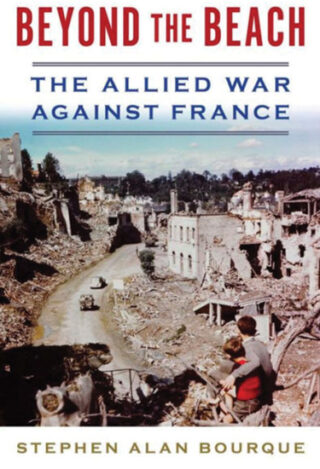 Beyond the Beach: The Allied War Against France (Stephen Alan Bourque, Naval Institute Press, Annapolis, MD, 2018, 353 pp., maps, photographs, appendices, notes, bibliography, index, $34.95, hardcover)
Beyond the Beach: The Allied War Against France (Stephen Alan Bourque, Naval Institute Press, Annapolis, MD, 2018, 353 pp., maps, photographs, appendices, notes, bibliography, index, $34.95, hardcover)
The Allied landings in Normandy on June 6, 1944, succeeded in part because the road and rail network in France, so vital to the Wehrmacht’s ability to deploy reinforcements, was smashed before the invasion. Nazi troops, particularly the armored units, had a difficult time moving to where they were needed. Months before D-Day, General Dwight Eisenhower took control of the American, British, and Canadian air forces in England and set them on a campaign of destruction focusing on railroads, bridges, ports, and military bases, which significantly handicapped his enemies. This aerial assault succeeded in its goal, making German movements much longer and more dangerous than they might have been, though some argue about its true effectiveness. This success was not without cost. Some 60,000 French civilians died during this effort, and hundreds of French buildings, churches, and cultural landmarks were damaged or destroyed. It was a terrible price for victory.
The air campaign preceding D-Day is often mentioned but rarely covered in great depth; this new work corrects that omission with its careful research and well-reasoned arguments. The author provides detailed accounts from those closest to the event, including planning staffs, the pilots and aircrew who flew the missions, and most importantly the beleaguered French citizens who endured the air attacks and paid heavily for their eventual liberation. Many of them died, and the author includes their stories, drawn from their surviving relatives and friends. The book persuasively argues the Allied victory was not as clean as many have portrayed it.
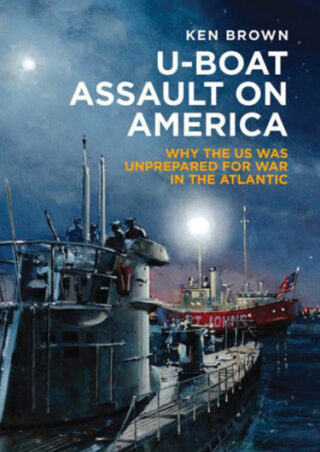 U-Boat Assault on America: Why the US was Unprepared for War in the Atlantic (Ken Brown, Seaforth Publishing, Barnsley, UK, 2017, 208 pp., maps, photographs, appendix, notes, bibliography, index, $34.95, hardcover)
U-Boat Assault on America: Why the US was Unprepared for War in the Atlantic (Ken Brown, Seaforth Publishing, Barnsley, UK, 2017, 208 pp., maps, photographs, appendix, notes, bibliography, index, $34.95, hardcover)
The first six months of 1942 were the German U-boat arm’s second “Happy Time.” Nazi submarines roamed the Eastern Seaboard of the United States, sinking both merchant vessels and U.S. Navy warships virtually at will. The American military was ill prepared to deal with the sudden onslaught, while civilians were initially reluctant to accept wartime exigencies. Major ports such as New York City had to adapt to the threat of not only submarine attack but also sabotage by enemy agents. The U.S. Navy had only recently begun to rearm, and it took time to organize and gather forces, initiate convoy operations, and start taking the fight to the Germans.
The author provides cogent explanations of how and why the 1942 U-Boat campaign played out the way it did. Several chapters are dedicated to the prewar political and military situation, which laid the foundation for later events. The New York City port is also given attention, including its vulnerability to sabotage and the Navy’s attempt to reduce that threat by establishing a relationship with the New York Mafia. Major personalities are also covered in detail. This book is a detailed look at the beginning of America’s involvement in the Battle of the Atlantic.
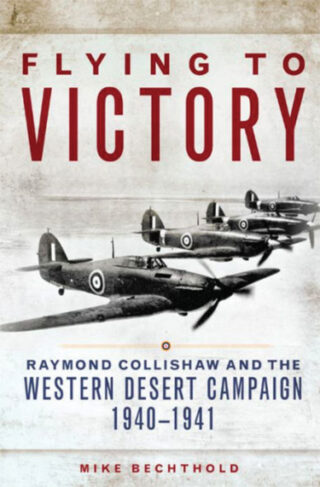 Flying to Victory: Raymond Collishaw and the Western Desert Campaign 1940-41 (Mike Bechthold, University of Oklahoma Press, Norman, 2017, 281 pp., maps, photographs, notes, bibliography, index, $34.95, hardcover)
Flying to Victory: Raymond Collishaw and the Western Desert Campaign 1940-41 (Mike Bechthold, University of Oklahoma Press, Norman, 2017, 281 pp., maps, photographs, notes, bibliography, index, $34.95, hardcover)
Raymond Collishaw was a Canadian-born pilot who spent 28 years in the Royal Air Force. During World War I he was a fighter pilot who achieved a record of 61 aerial victories in the skies over the Western Front. He remained in the service after the war, and by the beginning of World War II he was an air commodore commanding a Royal Air Force group in Egypt. The air war there did not involve air-to-air combat to the extent seen during the Battle of Britain. What it did require was a massive air-ground campaign of both close air support of Army units in battle and a deeper battle against the fragile logistics lines of the Axis forces. Collishaw contributed greatly to the British development of tactical air power and its employment. Over time this system became the basis for the later air campaigns carried out by the Allies over Europe. The Western Desert was where Collishaw learned the deadly art of air warfare.
The University of Oklahoma has been publishing its Campaigns and Commanders Series for a number of years, and this is Volume 58, the latest addition to the series. It is a worthy addition, delving into the military experiences of this unsung hero of the war. The author deftly and effectively explains how Collishaw contributed to victory in the war and the historical development of air power.
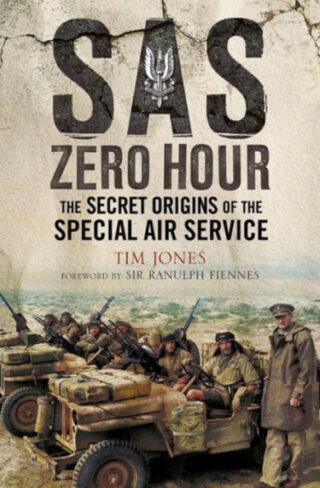 SAS Zero Hour: The Secret Origins of the Special Air Service (Tim Jones, Frontline Books, South Yorkshire, UK, 2018, 240 pp., photographs, notes, bibliography, index, $22.95, softcover)
SAS Zero Hour: The Secret Origins of the Special Air Service (Tim Jones, Frontline Books, South Yorkshire, UK, 2018, 240 pp., photographs, notes, bibliography, index, $22.95, softcover)
The United Kingdom’s Special Air Service (SAS) is the model for special forces organizations worldwide. It had its beginnings in the early days of World War II, where many think it was the sole brainchild of one man, David Stirling. While he was instrumental in creating the SAS, other figures also played important parts in its genesis. Archibald Wavell, Claude Auchinleck, and other notable military leaders helped create an environment in which Britain’s commandos could form useful units for reconnaissance, raiding, and unconventional warfare.
The author investigates the creation of the SAS and attributes its formation to a group effort rather than the idea of a single man. He uses a number of primary sources as well as the regimental histories of the unit to back his assertion and lay out the history of how the SAS came into being. The book is more than an organizational history, however. It includes a great deal of coverage of the group in action in North Africa, where it first proved its capabilities.
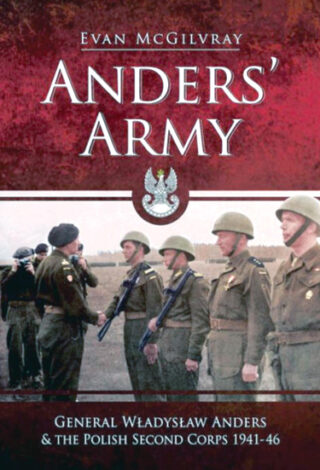 Anders’ Army: General Wladyslaw Anders and the Polish Second Corps 1941-46 (Evan McGilvray, Pen and Sword Books, South Yorkshire, UK, 2018, 270 pp., map, photographs, notes, index, $32.95, hardcover)
Anders’ Army: General Wladyslaw Anders and the Polish Second Corps 1941-46 (Evan McGilvray, Pen and Sword Books, South Yorkshire, UK, 2018, 270 pp., map, photographs, notes, index, $32.95, hardcover)
The Polish people suffered greatly during World War II when the Soviet Union, then allied with Germany, invaded Poland in 1939. Wladyslaw Anders and thousands of his countrymen were imprisoned and subjected to horrible conditions, only to be freed and evacuated through Iran when the Nazi-Soviet alliance crumbled into open warfare in 1941. Anders made his way to the British Empire, where he and his fellow Poles were formed into the Polish II Corps with Anders in command. That formation was eventually committed to combat in Italy, where it fought at Monte Cassino and elsewhere. Anders naturally held a deep distrust of Josef Stalin and the Soviets and advocated war against them after the Third Reich was defeated.
This new book covers not only the battle history of the Polish II Corps but also the peculiar history of its leader. Anders took part in political intrigues, including plotting against the Polish Prime Minister Wladyslaw Sikorski and sending death squads into occupied Poland to kill potential rivals. The author examines these allegations as well, providing a detailed look at Anders both during the war and afterward, including the consequences of his actions. One of the strengths of this work is its coverage of the infighting among the Poles during the war, a subject that rarely receives much attention.
New and Noteworthy
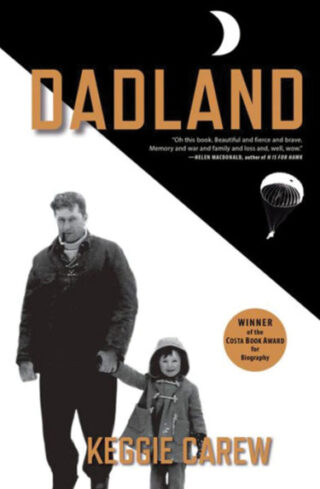 Hurricane (Paul E. Eden, Osprey Publishing 2018, $12.00, hardcover) This is a guide to the famous British fighter aircraft. It includes technical data, artwork, and photographs of surviving planes that still fly today.
Hurricane (Paul E. Eden, Osprey Publishing 2018, $12.00, hardcover) This is a guide to the famous British fighter aircraft. It includes technical data, artwork, and photographs of surviving planes that still fly today.
Short Stirling Units of World War 2 (Jonathan Falconer, Osprey Publishing, 2018, $23.00, softcover) The Stirling was England’s first four-engine heavy bomber of the war. At its peak there were 12 squadrons flying this large aircraft.
Dadland (Keggie Carew, Grove Atlantic, 2017, $17.00, softcover) The author’s father was a special forces operative during World War II. This book covers his life and her journey of discovery about his past.
Wartime Broadcasting (Mike Brown, Shire Books, 2018, $14.00, softcover) This is a concise history of the BBC during World War II. It is well illustrated with photographs and wartime art.
A Tour of the Arnhem Battlefields: 17-26 September 1944 (John Waddy, Pen and Sword Books, 2017, $24.95, softcover) This is a guidebook to touring the Battlefields of Operation Market Garden. It comes with a separate set of maps to assist the tourist.
The Day Rommel Was Stopped: The Battle of Ruweisat Ridge 2 July 1942 (F.R. Jephson and Chris Jephson, Casemate Publishers, 2018, $32.95, hardcover) This action was a crucial part of the Battle of El Alamein. The lead author was a participant in the engagement.
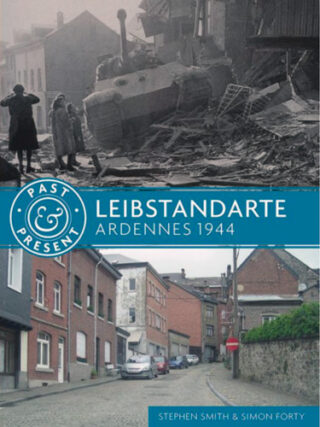 Past and Present: Leibstandarte Ardennes 1944 (Steven Smith, Casemate Publishers, 2017, $16.95, softcover) The 1st SS Panzer Division spearheaded 6th Panzer Army’s assault during the Battle of the Bulge. This book shows the action using photographs of the unit in action accompanied by images of what the area looks like now.
Past and Present: Leibstandarte Ardennes 1944 (Steven Smith, Casemate Publishers, 2017, $16.95, softcover) The 1st SS Panzer Division spearheaded 6th Panzer Army’s assault during the Battle of the Bulge. This book shows the action using photographs of the unit in action accompanied by images of what the area looks like now.
Rising Sun at War: The Japanese Army 1931-1945 (Philip Jowett, Pen and Sword Books, 2017, $28.95, softcover) This is a book of images from Japan’s war against China and later the Allies. There is also text explaining the organization and plans of the Japanese Army during the period.
Reckonings: Legacies of Nazi Persecution and the Quest for Justice (Mary Fulbrook, Oxford University Press, 2018, $34.95, hardcover) This is a well-written guide to the search for justice after the fall of the Third Reich and the legal complexities of doing so. The author exposes many myths about the situation and shows how most Nazis never paid for their crimes.
Becoming Hitler: The Making of a Nazi (Thomas Weber, Basic Books, 2017, $35.00, hardcover) The author examines how Hitler made his way to the Nazi Party, forming his ethos and aims along the way. Surprisingly, the reviled dictator was at one point an aimless loner who toyed with the politics of both left and right after World War I.
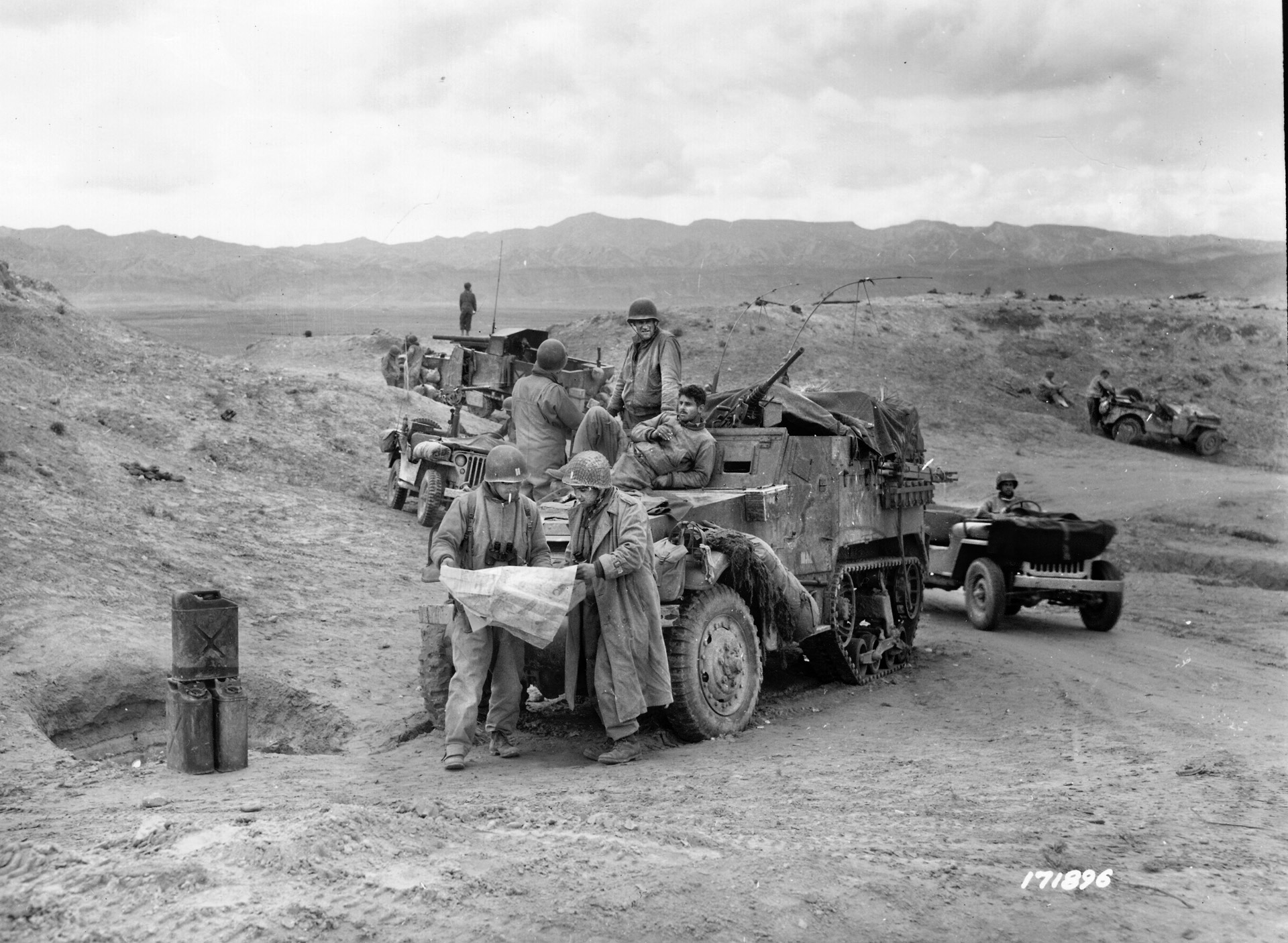
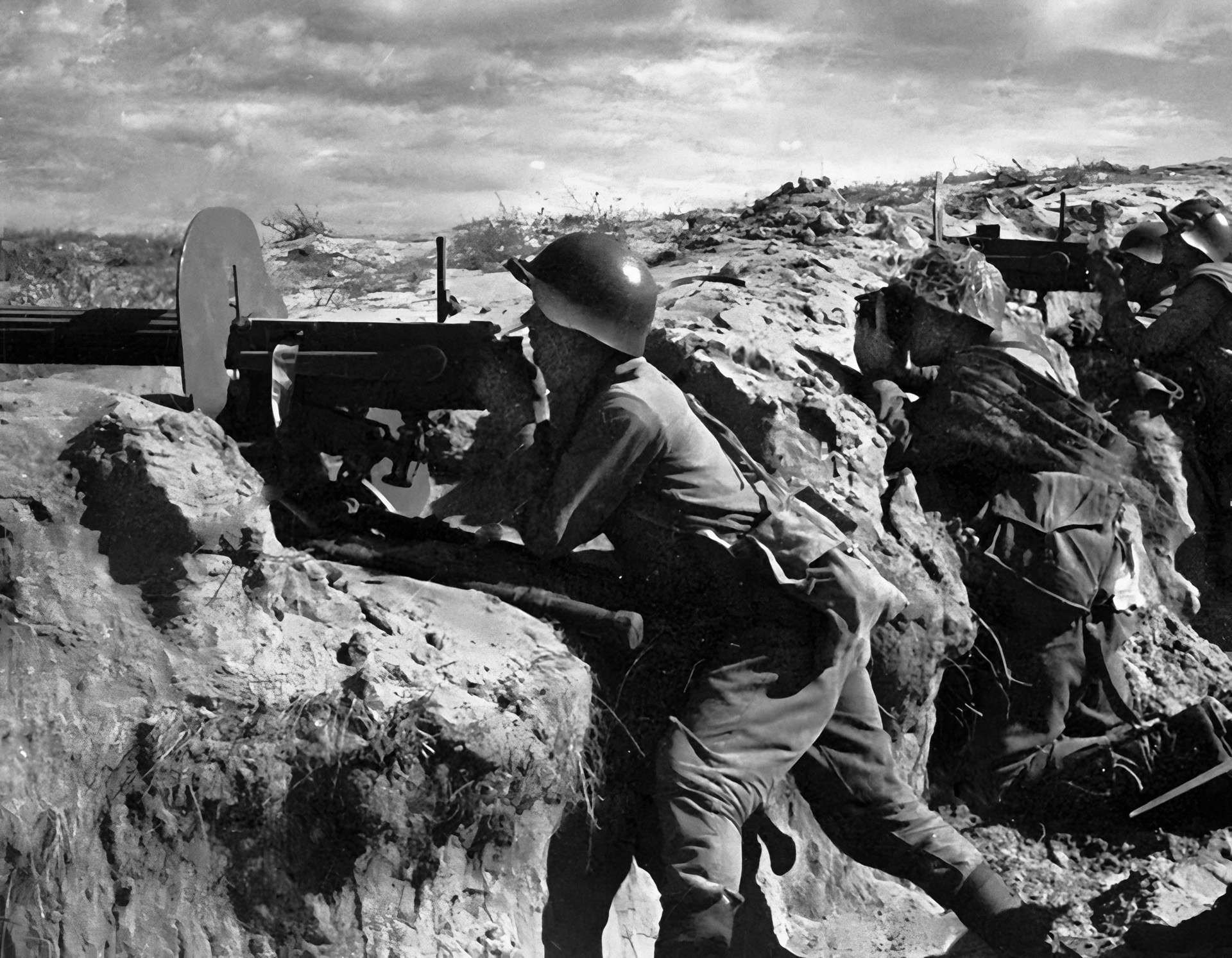
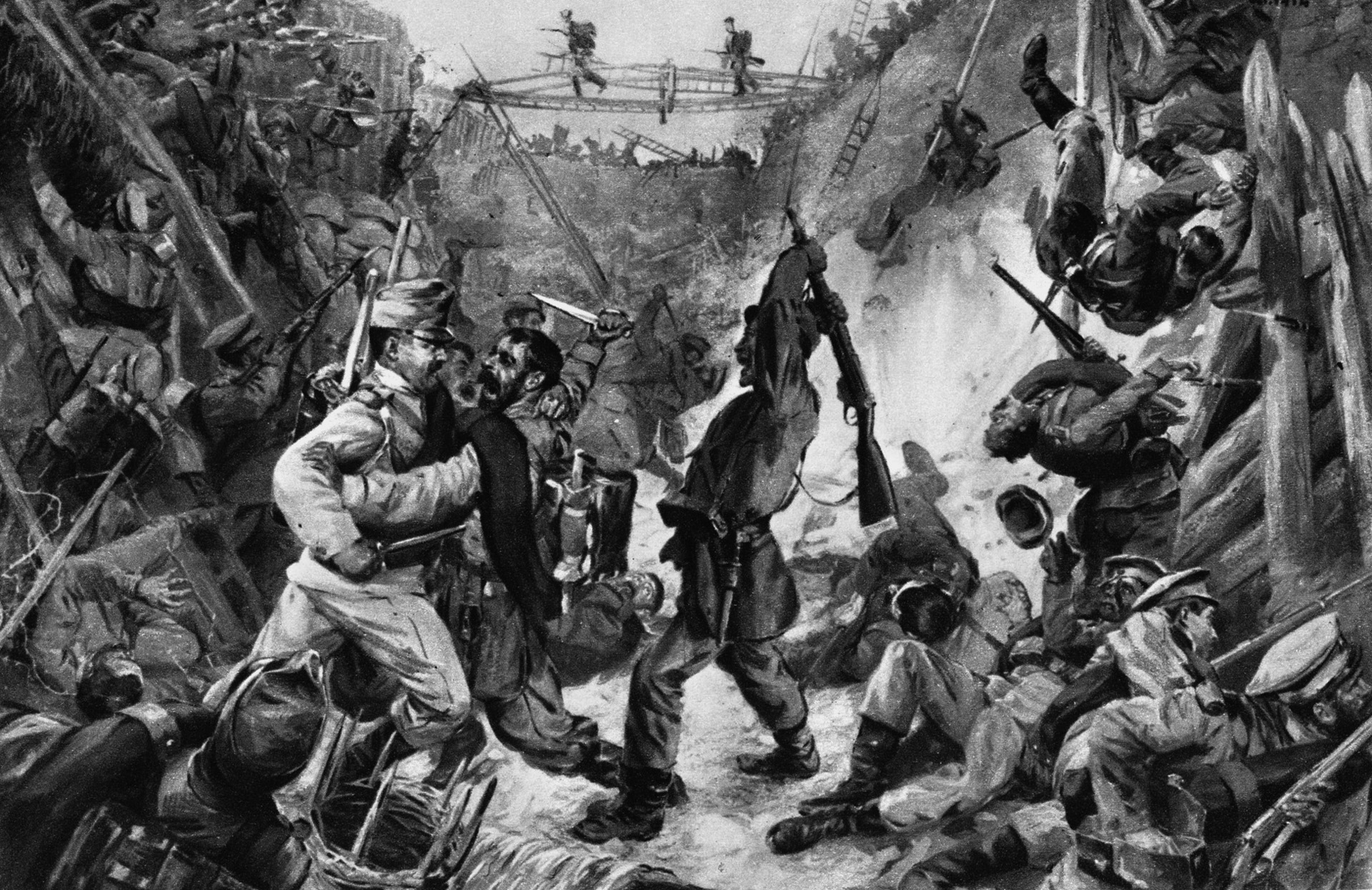
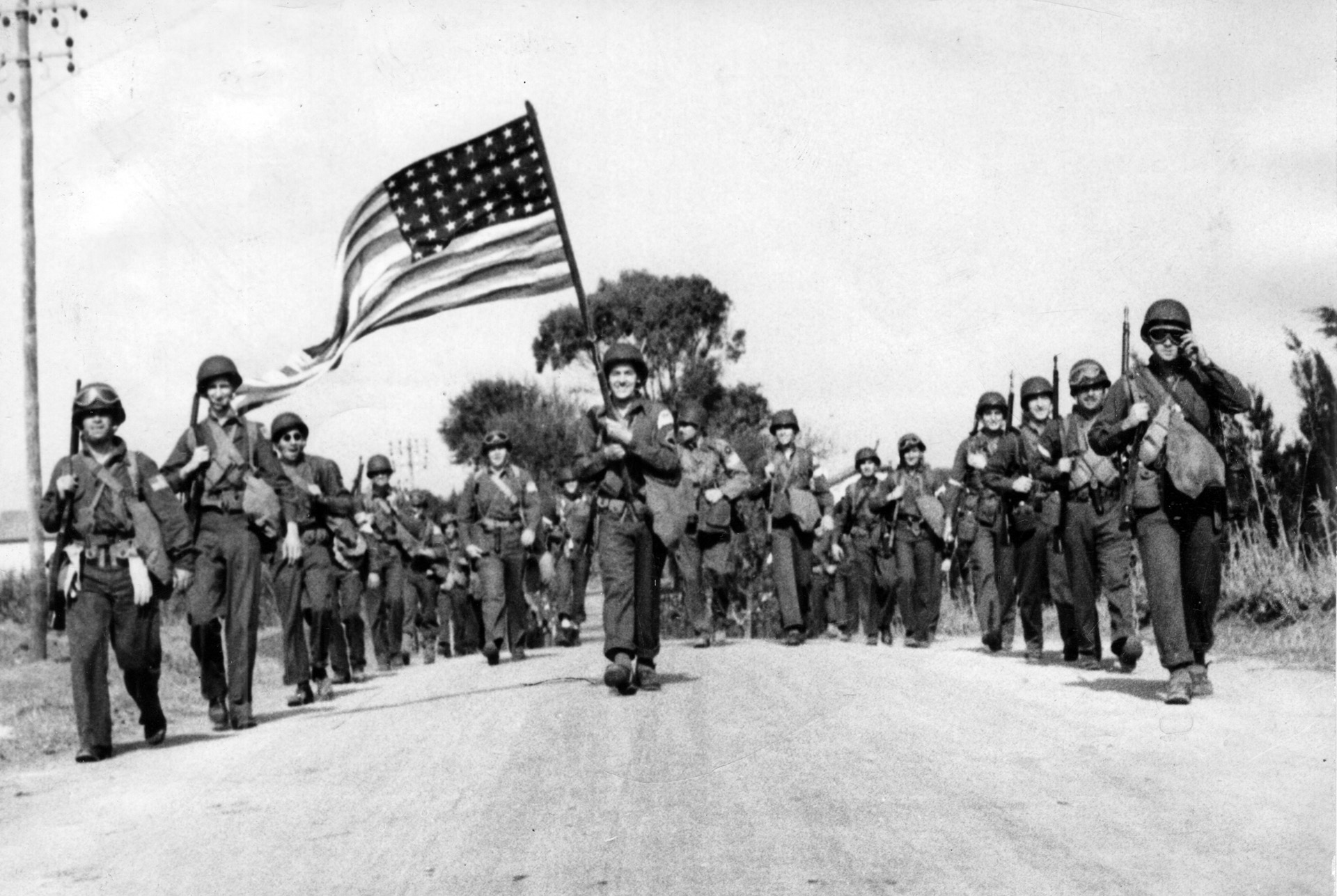

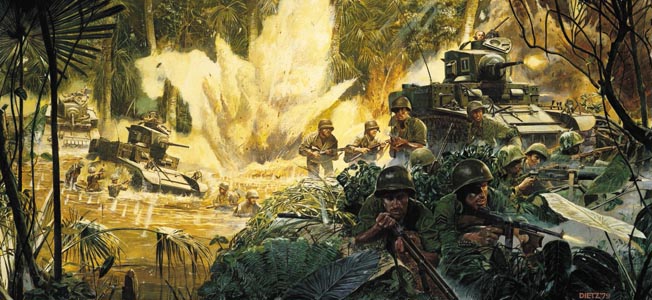
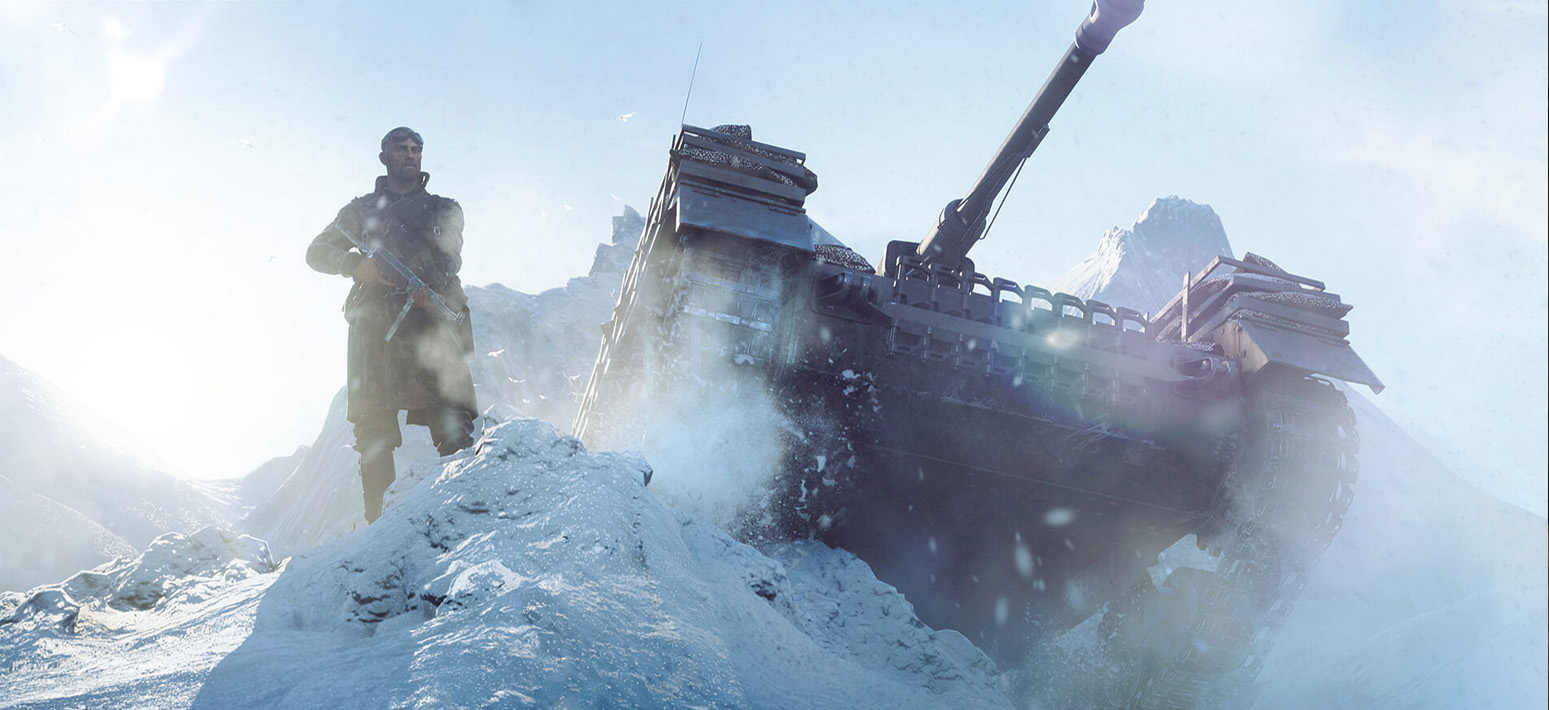
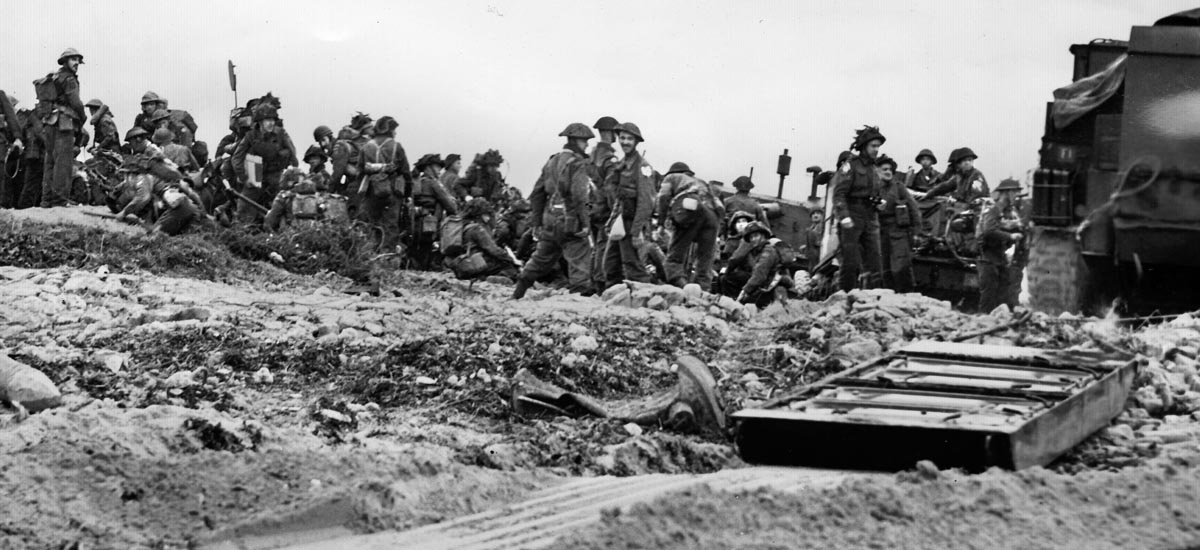
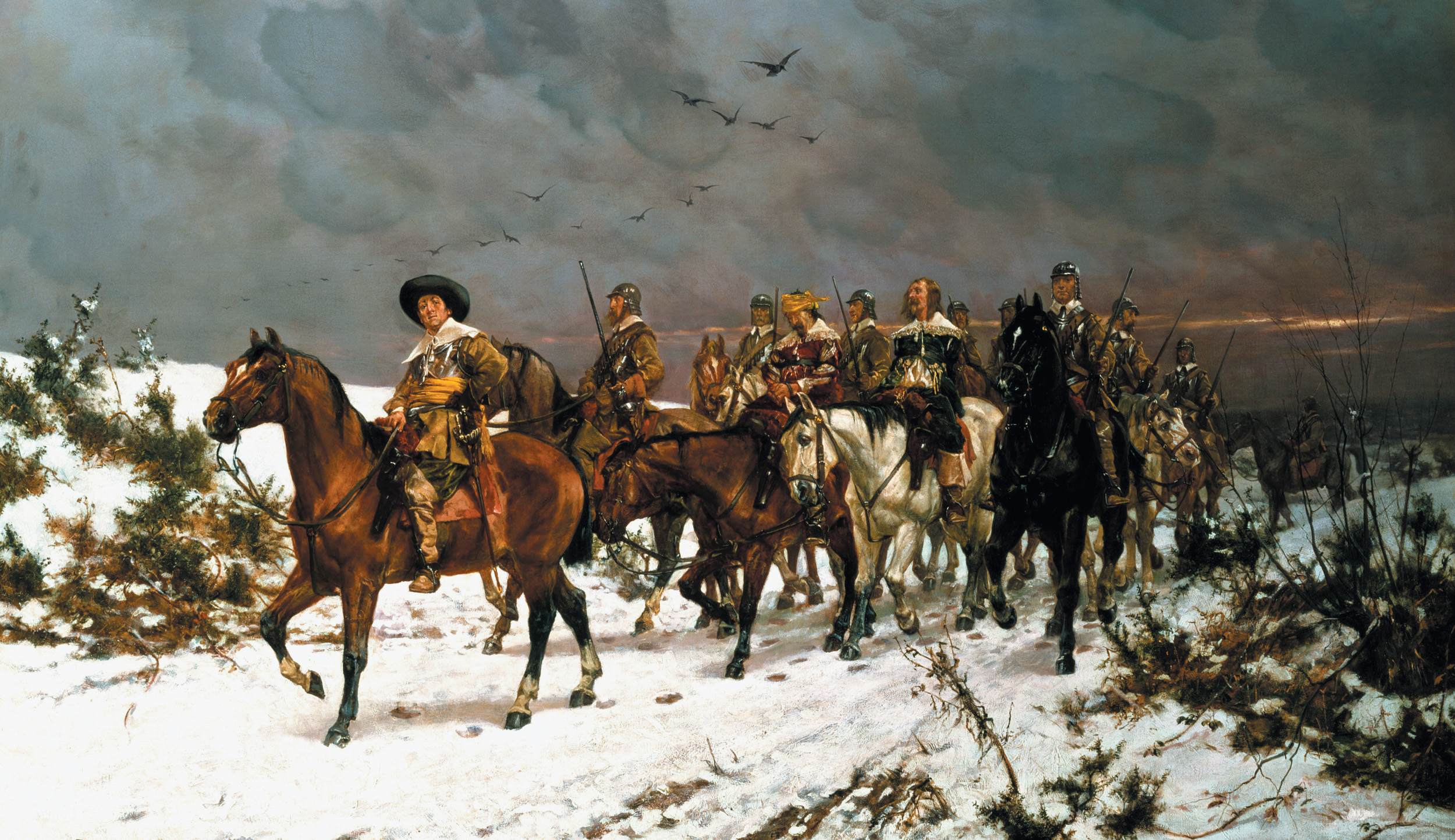
Join The Conversation
Comments
View All Comments